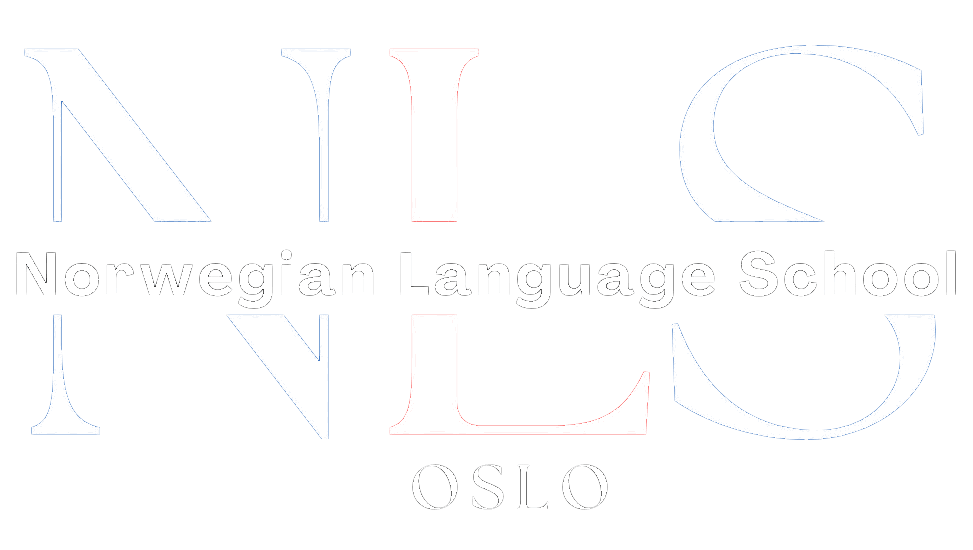

Norwegian Adverbs That Will Change Your Conversations: 10 Must-Learn Words
Adverbs are an essential part of any language, including Norwegian. They play a crucial role in communication by modifying verbs, adjectives, and other adverbs to provide more information about how, when, where, or to what extent an action is performed. Adverbs add depth and nuance to sentences, allowing speakers to convey their thoughts and emotions more effectively.
In Norwegian, adverbs are particularly important because they help learners express themselves with precision and clarity. By using adverbs correctly, you can enhance your language skills and become a more fluent and confident speaker.
Table of Contents
ToggleThe importance of adverbs in conveying tone and meaning
Adverbs have the power to change the meaning of a sentence and convey different tones and attitudes. For example, consider the sentence “He ran quickly.” By adding the adverb “quickly,” the sentence now implies that he ran with speed and urgency. However, if we replace “quickly” with “slowly,” the meaning changes entirely, suggesting that he ran at a leisurely pace.
Adverbs also play a crucial role in expressing emotions and attitudes. For instance, if someone says “I really love this book,” the adverb “really” adds emphasis and intensity to the statement, indicating a strong positive feeling towards the book. On the other hand, if someone says “I barely passed the exam,” the adverb “barely” conveys a sense of disappointment or frustration.
Understanding the role of adverbs in Norwegian grammar
To understand the role of adverbs in Norwegian grammar, it is essential to have an overview of Norwegian sentence structure. Norwegian follows a subject-verb-object (SVO) word order, similar to English. However, unlike English, Norwegian has a flexible word order, allowing for greater variation in sentence structure.
Adverbs in Norwegian can be placed before or after the verb, depending on the emphasis or meaning the speaker wants to convey. For example, in the sentence “Han spiser raskt” (He eats quickly), the adverb “raskt” (quickly) comes after the verb “spiser” (eats). However, if we want to emphasize the adverb, we can say “Han spiser fort” (He eats quickly), with the adverb placed before the verb.
There are also some differences between Norwegian and English adverbs. In English, many adverbs are formed by adding “-ly” to an adjective (e.g., quick – quickly). In Norwegian, however, adverbs are often formed by adding “-t” or “-tt” to the neuter form of an adjective (e.g., rask – raskt).
10 must-learn Norwegian adverbs for everyday conversation
To improve your Norwegian language skills, it is essential to learn and practice commonly used adverbs. Here are ten must-learn Norwegian adverbs for everyday conversation:
1. Alltid – Always
Example: Jeg spiser alltid frokost før jeg går på jobb. (I always eat breakfast before going to work.)
2. Aldri – Never
Example: Jeg drikker aldri kaffe. (I never drink coffee.)
3. Kanskje – Maybe
Example: Kanskje vi kan møtes senere? (Maybe we can meet later?)
4. Fort – Quickly
Example: Kan du snakke litt saktere? Jeg forstår ikke så fort. (Can you speak a bit slower? I don’t understand that quickly.)
5. Langsomt – Slowly
Example: Han gikk langsomt nedover gaten. (He walked slowly down the street.)
6. Nesten – Almost
Example: Jeg var nesten for sent til bussen i dag. (I was almost late for the bus today.)
7. Sakte – Slowly
Example: Kjør sakte, veien er glatt. (Drive slowly, the road is slippery.)
8. Raskt – Quickly
Example: Jeg må gå raskt for å rekke toget. (I have to walk quickly to catch the train.)
9. Vanligvis – Usually
Example: Jeg spiser vanligvis lunsj klokken ett. (I usually have lunch at one o’clock.)
10. Nylig – Recently
Example: Jeg har nylig begynt å lære norsk. (I have recently started learning Norwegian.)
When using these adverbs in conversation, pay attention to their placement in the sentence and practice pronouncing them correctly.
How to use adverbs to express emphasis and intensity
Adverbs can be used to add emphasis and intensity to a sentence, allowing speakers to convey their emotions and attitudes more effectively. By using adverbs strategically, you can make your speech more engaging and impactful.
For example, consider the sentence “Jeg er veldig glad” (I am very happy). The adverb “veldig” (very) adds emphasis to the adjective “glad” (happy), intensifying the feeling of happiness. Similarly, if someone says “Det var utrolig morsomt” (It was incredibly fun), the adverb “utrolig” (incredibly) enhances the adjective “morsomt” (fun), emphasizing the level of enjoyment.
Other adverbs that can be used for emphasis include “ekstremt” (extremely), “helt” (completely), and “absolutt” (absolutely). By incorporating these adverbs into your speech, you can make your statements more powerful and memorable.
Using adverbs to modify verbs and adjectives in Norwegian

Adverbs can also be used to modify verbs and adjectives, adding more detail and specificity to a sentence. By using adverbs in this way, you can provide more information about how an action is performed or the degree to which an adjective applies.
For example, consider the sentence “Han løper fort” (He runs quickly). The adverb “fort” (quickly) modifies the verb “løper” (runs), indicating the speed at which he runs. Similarly, if someone says “Hun er veldig pen” (She is very beautiful), the adverb “veldig” (very) modifies the adjective “pen” (beautiful), expressing a high degree of beauty.
Other adverbs that can be used to modify verbs and adjectives include “langsomt” (slowly), “intenst” (intensely), and “nøye” (carefully). By incorporating these adverbs into your speech, you can provide more specific information and paint a clearer picture for your listener.
The nuances of adverb placement in Norwegian sentences
In Norwegian, the placement of adverbs in a sentence can affect the meaning and emphasis of the statement. Understanding the rules for adverb placement is crucial for conveying your intended message accurately.
Generally, adverbs in Norwegian are placed after the verb they modify. For example, in the sentence “Jeg leser ofte bøker” (I often read books), the adverb “ofte” (often) comes after the verb “leser” (read). However, if you want to emphasize the adverb, you can place it before the verb. For instance, “Ofte leser jeg bøker” (Often I read books).
There are also some exceptions to this rule. Adverbs of time and frequency usually come at the beginning or end of a sentence. For example, “I går så jeg en film” (Yesterday I watched a movie) and “Jeg leser bøker hver dag” (I read books every day).
By understanding the nuances of adverb placement, you can effectively convey your intended meaning and emphasize specific elements in your speech.
Common mistakes to avoid when using Norwegian adverbs
When using adverbs in Norwegian, it is essential to be aware of common mistakes that learners often make. By avoiding these errors, you can improve your language skills and communicate more effectively.
One common mistake is using adjectives instead of adverbs. In Norwegian, adverbs are used to modify verbs, adjectives, and other adverbs, while adjectives are used to describe nouns. For example, instead of saying “Jeg snakker norsk godt” (I speak Norwegian good), you should say “Jeg snakker norsk bra” (I speak Norwegian well).
Another mistake is using the wrong form of the adverb. In Norwegian, adverbs are often formed by adding “-t” or “-tt” to the neuter form of an adjective. For example, instead of saying “Jeg er raskt” (I am quickly), you should say “Jeg er raskt” (I am quick).
It is also important to pay attention to the placement of adverbs in a sentence. Placing an adverb in the wrong position can change the meaning or make the sentence sound unnatural. By practicing and being mindful of these common mistakes, you can improve your adverb usage in Norwegian.
Tips for practicing and mastering Norwegian adverbs
To master Norwegian adverbs, it is important to practice using them in conversation and immerse yourself in the language. Here are some tips to help you improve your adverb skills:
1. Practice speaking: Engage in conversations with native speakers or language exchange partners to practice using adverbs in context. Focus on incorporating adverbs naturally into your speech.
2. Listen to native speakers: Pay attention to how native speakers use adverbs in their conversations. Listen to podcasts, watch movies or TV shows, and try to identify and understand the adverbs being used.
3. Read Norwegian texts: Read books, newspapers, or online articles in Norwegian to expose yourself to different adverbs and see how they are used in written language.
4. Use language learning resources: Utilize language learning resources such as textbooks, online courses, or language apps that provide exercises and explanations on adverb usage.
5. Keep a vocabulary notebook: Write down new adverbs you come across and practice using them in sentences. Review your notebook regularly to reinforce your learning.
6. Seek feedback: Ask native speakers or language teachers to provide feedback on your adverb usage. They can help correct any mistakes and provide guidance on improving your skills.
By consistently practicing and immersing yourself in the language, you can become more proficient in using adverbs and enhance your overall Norwegian language skills.
Enhancing your Norwegian language skills with adverbs
In conclusion, adverbs are an essential part of communication in any language, including Norwegian. They play a crucial role in conveying tone, meaning, and emotions, allowing speakers to express themselves more effectively.
Understanding the role of adverbs in Norwegian grammar and practicing their usage is key to improving your language skills. By learning commonly used adverbs, mastering their placement in sentences, and avoiding common mistakes, you can become a more fluent and confident speaker of Norwegian.
So keep practicing, immerse yourself in the language, and continue to enhance your Norwegian language skills with the power of adverbs.
If you’re looking to expand your Norwegian language skills beyond adverbs, you might be interested in this article on “Understanding the Subjunctive Mood in English Grammar.” Learning about the subjunctive mood can help you express hypothetical or unreal situations in a more nuanced way. Check out the article here to enhance your understanding of this grammatical concept.

Norwegian A1-A2
Course Overview The Norwegian A1-A2 course is an online program focused on teaching essential Norwegian grammar and vocabulary. It includes a variety of materials and topics, with opportunities to interact with a Norwegian teacher entirely online. Curriculum Highlights The course covers key areas such as grammar and vocabulary and topics such as family, daily life, education, work, traditions, and leisure activities. Who Should Enroll? This course is perfect for beginners or those at the A1 or A2 levels who want to improve their Norwegian skills. What You Get Access to the full Norwegian A1-A2 course. A monthly 1-hour online conversation with a teacher. Many written and oral assignments. Comprehensive information on Norwegian grammar, Norwegian vocabulary and how to use them, important sentence structures, etc. Tips on additional resources to further enhance your Norwegian learning.
0 students enrolled
Last updated Dec 10th, 2024
If you want to learn Norwegian, you can register for classes here. We look forward to hearing from you and helping you become fluent in Norwegian.





